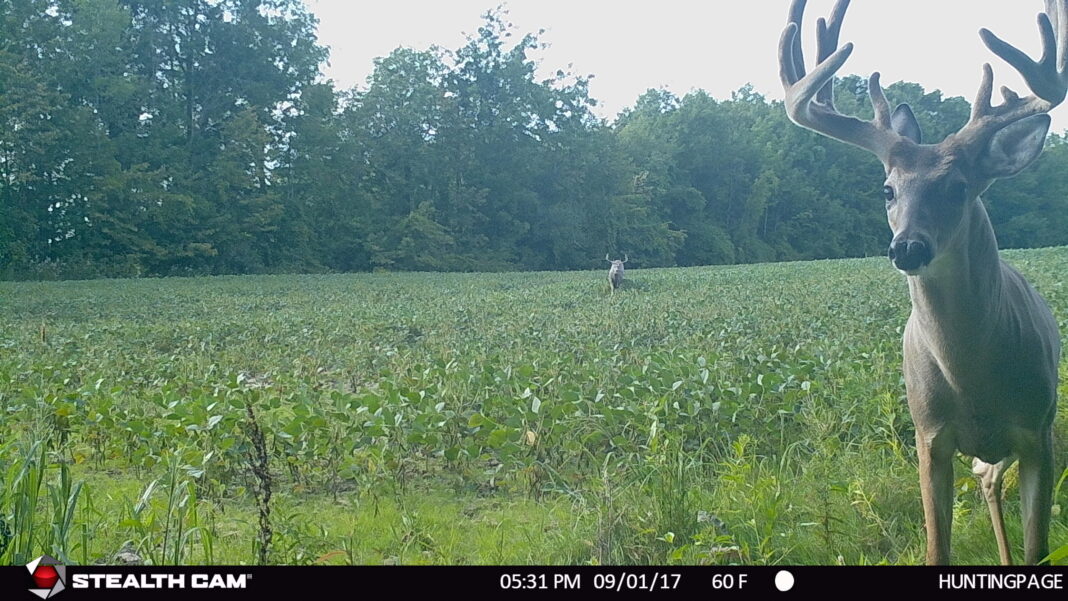July is big buck month, if you are into early season scouting that is. Antlers are about 50 percent developed and this is the time of summer that bucks start to become interesting and unique. July is an excellent window to scout and identify bachelor groups of bucks and what food they are goarging themselves on. At this time of summer, during the early evening and feeding in out-of-the way edges of crop fields like soybeans and mature grains. Freshly mowed hay and alfalfa fields may also be a good bet. Setting up our stealth cams is an easy way to keep close track of what is happening in your hunting area, but they’re not the only way. A sharp pair of eyeballs and some good old sitting and observing works equally well and incorporating all of this data into HuntStand give you a whitetail playbook

As July rolls into August this is the time of the year when big bucks get prompted that humans mean intrusion and snap them back to reality, They’re out and about since they haven‘t been pressured in nearly a year and they’re feeling the call to feed, but they’ll shut down right away if compelled. The secret to early-season scouting should be to maintain your distance and scout very low impact.
Below are a few strategies for low-impact Mature Buck Scouting
– Watching from a distance (five hundred to eight hundred yards) with wind in your favor
– Get great optics
– Do any stand work in the middle of the day
– Do not set up where deer can pressure you to show yourself when leaving
– Observe the wind—deer can smell you up to a mile away under certain circumstances
– Watch your entrace and exits—Whitetails will alert to footsteps for as much as twenty four hours
– If scouting from an automobile, park in out of the way place and stay inside
– Do not keep changing parking locations, allow them to get accustomed to your automobile
There aren’t any guarantees that the deer you see in July and August are going to be there in October, but one thing is for sure, they’ll be on the feed for those few months, and you have a pretty good idea of the age structure in the surrounding area.



















![The Best Deer Camp Chili [VIDEO] Deer Chili Ingredients, Tomatoes, Chili Spices](/wp-content/uploads/2015/10/Deer-Chili-Deer-Camp-Recipe-218x150.jpg)
![How to Call Elk Early in the Season [VIDEO]](/wp-content/uploads/2016/08/byers003-218x150.jpg)





![Idiots Disturb Hunter: How Would You Have Handled It? [VIDEO]](/wp-content/uploads/2015/10/DSC00110-e1474487693878-100x70.jpg)
![Albino Buck Shocked to Shed His Antlers [VIDEO]](/wp-content/uploads/2015/10/AlbinoDeer-100x70.jpg)